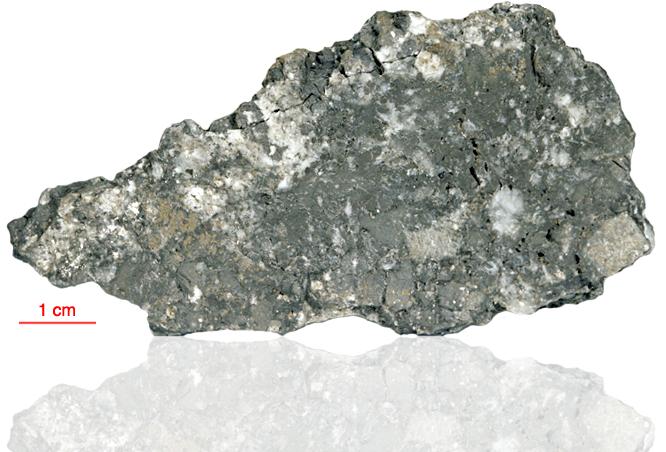
Fact sheet
60115 is a black and white breccia with light matrix. It is clast-rich with distinct clast boundaries and contains relics of shocked anorthosite, grading into swirly glass, are abundant. Glass penetrates some of the dark clasts and aphanitic impact melts are present. Charles Meyer aptly summarises the sample in his Lunar Compendium entry - “ It’s a real mess”.
Our thin section shows a light coloured, mainly anorthositic clast with intense shock features and regions of melting (rotation 2). Fragmented clasts within this clast contain significant metallic iron.
The sample weighed 132.5 grams before analysis and has not been dated.
Further details of this and other Apollo samples are here: http://curator.jsc.nasa.gov/lunar/
Discolouration of the thin section mounting resin shows as yellow patches throughout the section.
The Apollo 16 landing site was in the hilly region around Descartes crater in the lunar highlands. The landing spot was chosen to allow the astronauts to gather geologically older lunar material (Descartes Formation and the Cayley Formation) than the samples obtained in the first four landings, which were in or near lunar maria.
The mission lasted 11.1 days, with a stay on the lunar surface of 71 hours. The crew were on the lunar surface for 20.2 hours during which they traversed approximately 27 kilometers and collected approximately 96 kilograms of samples.
Apollo 16 was launched on 16 April 1972.






